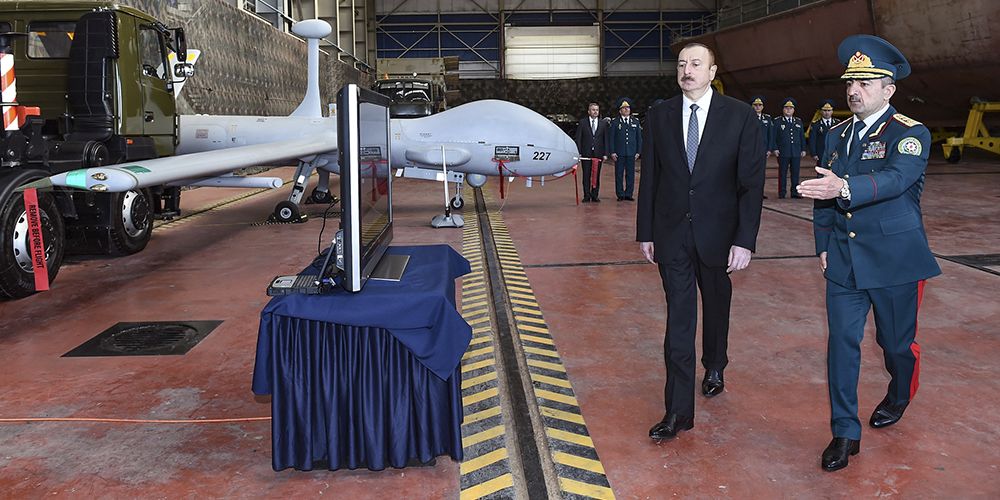Search

Publications
Trends in Azerbaijan’s unmanned aircraft programs

Another escalation of the situation on the border between Azerbaijan and Armenia in mid-September due to an armed provocation of the Armenian side, has once again demonstrated the high importance of unmanned aircraft, which were effectively used by the Azerbaijani troops during the fighting, in accomplishing the assigned missions. The recent ADEX 2022 international exhibition of arms and military equipment in Baku gives observers a pretty complete picture of what is going on in Azerbaijan in this sphere.
To understand not just the current state of affairs in the field of equipping the Azerbaijani Armed Forces with unmanned aerial vehicles, but to see how the situation has evolved, it is necessary to step back a few years from the present moment. Back in the 2000s, the Azerbaijani army was largely equipped with the remnants of weapons available in the region since Soviet times. Unmanned aerial vehicles, and moreover, modern ones, were not available as a class.
At some point, this state of affairs came to contradict the current trends in the Armed Forces, which the Azerbaijani leadership decided to significantly upgrade. This circumstance prompted the launch of a large-scale program to equip the national Armed Forces of Azerbaijan with unmanned aircraft systems and a related program to organize the local UAV industry.
Partnership with Israel
At the time when Azerbaijan showed interest to develop unmanned aircraft, there was neither R&D groundwork, nor manufacturing capabilities in the country to independently implement these plans in this field. Therefore, the choice was made in favor of imports and Israel, one of the world’s leaders in the field of UAV systems, was chosen as a partner.
The first unmanned systems purchased by Azerbaijan were the Orbiter 2 man-portable UAV systems and heavier Aerostar tactical fixed-wing UAVs developed by the Israeli company Aeronautics Defense Systems (now Aeronautics Group). The contract for the supply of 16 Orbiter 2 UAVs and 16 Aerostar UAVs was, according to available data, concluded in 2008, and the delivery itself was carried out in 2010.
Orbiter 2 is a lightweight flying-wing vehicle with a maximum take-off weight of 9.5 kg. The UAV can fly for up to 3-3.5 hours and operate within a radius of up to 15 km. It carries an Israeli Controp’s EO surveillance payload.
The second UAV mentioned above, the Aerostar, has a takeoff weight of about 220 kg. It is powered by an internal combustion engine and can stay in the air for up to 12 hours. The UAV can perform reconnaissance, surveillance and targeting missions within a radius of up to 250 km. in 2009, as follow-up to the first deal, an intergovernmental agreement was signed between Tel Aviv and Baku to build an assembly plant for producing UAV systems in Azerbaijan. A company named Azad Systems began manufacturing drones in 2011.
The cooperation with Aeronautics was later extended: Azerbaijan purchased newer UAV systems, the Orbiter 3, and Orbiter 1K loitering munitions. The first of them with a takeoff weight of 20 kg has the canard configuration. It can fly for up to 6-8 hours and carry a payload weighing up to 3 kg. As such, it uses an advanced EO system capable of carrying out not only surveillance but also target illumination missions. The second one is a modified version of the Orbiter 2s assembled in Azerbaijan. In addition to the standard onboard EO system, a HE warhead weighing about 3 kg is integrated into the airframe. The loitering time is about 2-3 hours and the range is up to 100 km. According to available data, at least 100 such loitering munitions were to be delivered to the Azerbaijani Armed Forces under several contracts.
Despite the initial choice in favor of Aeronautics, this company did not become a monopoly supplier for the Azerbaijani Ministry of Defense. It was decided in the country to diversify suppliers by distributing orders among different Israeli companies. So, in the same year 2008, when the first deal with Aeronautics was concluded, an agreement was also signed with another Israeli company, Elbit Systems, from which the Hermes-450 tactical and heavier Hermes-900 MALE UAVs were purchased.
The Hermes-450 UAV uses the aft-tail configuration with a high-mounted wing and a V-shaped tail, whose take-off weight can reach 550 kg. Its maximum endurance in the basic modification is 17 hours, and the range is 200 km.
The Hermes-900 is twice as heavy as the Hermes-450 and has a similar configuration. It is capable of loitering at altitudes up to 9,100 meters for up to 36 hours. The payload may include a multi-channel EO surveillance system and a synthetic-aperture radar. The Azerbaijani Hermes-900 UAVs were first shown publicly in 2017 among a number of new weapon systems and military equipment. It was reported that at that time the country had at least two such systems.
At the same time, two UAV systems were purchased from another Israeli company, the government-owned Israel Aerospace Industries (IAI), which essentially duplicated those purchased from Elbit. So, Searcher MkII UAVs similar to the Hermes-450 were purchased here. This unmanned vehicle uses a twin-beam layout, has a take-off weight of about 436 kg. The drone can perform flights lasting up to 15-18 hours, depending on its payload. It provides imagery intelligence, surveillance and targeting at ranges up to 250 km from the ground control station. According to available data, Azerbaijan has received at least 5 such drones.
Azerbaijan also purchased heavier Heron 1 UAVs of the same size as the Hermes-900. Like its low-end Searcher, this drone with a take-off weight of 1150 kg uses a twin-beam layout. It can stay in the air for up to 46 hours, flying at altitudes up to 9150 m. Its mission radius reaches 300 km when transmitting data via a line-of-sight channel and can be practically unlimited when using a satellite channel. To perform the assigned missions, the UAV is equipped with a MOSP EO system, as well as a synthetic-aperture radar. According to available data, the contract for the purchase of a batch of 16 Heron 1 UAVs was concluded with IAI in 2012 with the delivery of the ordered systems over the next four years.
Azerbaijan has also divided orders for loitering munitions among different suppliers. For example, a batch of Harop kamikaze drones was purchased from IAI. This drone uses the canard configuration and has a take-off weight of about 135 kg. The Harop is capable of flying over a given area for up to 6 hours, conducting aerial reconnaissance of targets, which it can then hit with a built-in 23-kg warhead. It was reported that at least 50 such loitering munitions were delivered to Azerbaijan. The Azerbaijani army has been using them since 2016, including during the war in Karabakh.
Azerbaijan purchased lighter SkyStriker loitering munitions from Elbit Systems. The drone uses the aft-tail configuration with a low-mounted wing and has a take-off weight of 35 kg. It carries an integrated modular warhead weighing 5 to 10 kg. The drone is launched using a catapult, after which the drone can loiter for up to two hours. It is worth noting that, apparently, Azerbaijan has become one of the first foreign customers of these systems – the availability of SkyStriker drones in the country became known in early 2019, while their total number, according to some estimates, is about 50-100 units.
Turkish direction
In the early 2020s, the unchallenged dominance of Israeli companies in the Azerbaijani UAV system market was somewhat shaken. Against the background of strengthening economic cooperation with Ankara, Baku also drew attention to Turkish unmanned aircraft systems.
In June 2020, Azerbaijani Defense Minister Zakir Hasanov announced that Azerbaijan had decided to purchase Bayraktar TB2 unmanned aircraft systems, developed by the Turkish company Baykar together with Kale Group. This twin-boom UAV with a maximum take-off weight of about 700 kg is capable of flying for up to a day, carrying up to 150 kg of payload on board. As such, the UAV can use not only reconnaissance and surveillance systems, but also weapons, which can include, among other things, four UMTAS laser-guided anti-tank missiles or MAM-C, MAM-L precision-guided aerial bombs developed and manufactured by the Turkish company Roketsan.
The statement by the Azerbaijani Defense Minister was made in the early summer, and already in the early autumn of the same 2020, during the Second Karabakh War, Bayraktar TB2 drones were already actively used against the Armenian Armed Forces units. Moreover, they were used not only against the most priority targets, but also against a fairly wide range of them, including artillery positions, as well as armored vehicles, including T-72 tanks, BMP-1 and BMP-2 infantry fighting vehicles, BTR-82 wheeled armored personnel carriers. The total number of Bayraktar TB2 systems purchased by Azerbaijan is not known.
It can be assumed with a high degree of confidence that Baykar's presence in Azerbaijan will be expanded in the future. It was reported that in January 2022, this company signed the first export contract for the supply of Akinci attack drones, which are significantly heavier than Bayraktar TB2, and their maximum take-off weight reaches 5.5 tons. The customer under this contract was not named, but it cannot be excluded that it was Azerbaijan. In early February this year, Seljuk Bayraktar, the director of Baykar, said in an interview with Azerbaijani TV that Turkey intends to launch the production of UAV systems at Azerbaijani enterprises. Moreover, he separately noted that Akinci UAVs will also be manufactured in Azerbaijan.
Indigenous efforts
Local companies are also making certain efforts to develop unmanned vehicles for the needs of the Azerbaijani Armed Forces. Thus, DefTech has developed two unmanned aerial vehicles and one loitering munition. Its developments were presented at the stand of the Ministry of Defense Industry of Azerbaijan at the ADEX 2022 exhibition. During the exhibition, DefTech co-founder Anvar Iskandarov said that the development of these aircraft began about 18 months ago and was carried out in cooperation with the National Aerospace Agency of Azerbaijan.
The first of the mentioned drones is the Turaz fixed-wing tactical UAV, which can perform vertical takeoff and landing. It is a high-wing aircraft with a V-shaped tail. Under the wing consoles there are beams with tractor propellers located at their ends and driven by electric motors for vertical takeoff and landing. Horizontal flight is provided by an engine with a pusher propeller located in the tail section of the UAV. The maximum endurance of the drone can reach 3 hours, the service ceiling is 3000 m.
According to the developer, the Turaz UAV is designed primarily to carry out intelligence, surveillance and reconnaissance (ISR) missions in the interests of the Ground Forces and Navy. In the latter case, ship-based deployment is also planned. The payload can be placed in pods under the fuselage.
The second of the drones presented by DefTech at ADEX 2022 is a prototype of an advanced tiltrotor. Its 1:3 scale model was shown. According to the company's representatives, the platform should perform logistical tasks. The unmanned vehicle is equipped with a tandem wing. At the ends of the lifting planes there are four propulsors in the form of ducted fans.
A scale prototype built to date is used in flight tests to collect flight and control data, which will help develop an autopilot. The wingspan of the full-size version of the UAV will be 12 meters. The fans are driven by electric motors. Each of them will produce 150 kg of thrust. The company expects that the final version of the UAV will be able to reach a maximum speed of 450 km/h and have an endurance of 1 hour.
The third of the unmanned vehicles developed by DefTech is the Fatum loitering munition. The vehicle is structurally similar to the well-known SwitchBlade kamikaze drone from the American company AeroVironment. It also has the tandem wing configuration, with the wing and tail planes unfolded after launch. The maximum take-off weight of the drone is 5.5 kg, including a warhead weighing up to 2 kg, and a range of 10-15 km. It is launched from a launch container.
Another local developer, Smart Point, presented a line of multicopter reconnaissance and attack drones. It was reported that the systems have been developed in response to projected market demand. The work was carried out in cooperation with the Ministry of Defense Industry of Azerbaijan.
The family of multicopters includes two small kamikaze quadcopters, Qirği and Quzgün, each of which is equipped with a high-explosive warhead, a larger ªahin quadcopter, which can carry one 60 mm mortar bomb, and the Qartal octocopter, which can carry two 81 mm mortar bombs. The last two mentioned UAV systems are equipped with ballistic computers that calculate the optimal position for the drone to engage its target.
At ADEX 2022, the company’s director Telman Huseynov noted that work on the UAVs began three years ago, and currently all the UAV systems are in operational use by the Armed Forces of Azerbaijan.
In addition, Smart Point has also developed the Simurq heavy-lift multicopter. This battery-powered UAV can be used to accomplish logistical tasks. Its load-lifting capacity is 30 kg, and in combat configuration it can be equipped with a two-channel electro-optical surveillance system operating in day and night modes, as well as two 10 kg munitions.
The UAV uses flight control software, which is common to a number of Smart Point drones. The control system implements navigation along a preset route or manual control. In addition, the system protects against spoofing and GPS/communication jamming. Work on the Simurq UAV began about three years ago, and now, as reported, it is in service with the Azerbaijani army.
Thoughts, observations, conclusions
Azerbaijan's initial procurement of unmanned aircraft was characterized by duplication of a number of items purchased. Most likely, this was due to the desire of the country's military leadership to have the opportunity to test various UAV systems in practice and eventually get its own objective opinion on their capabilities, as well as on how they relate to the needs of the national Armed Forces.
As a rule, in such a case, large-scale purchases are carried out at the initial stage and then, after saturating the troops with new equipment, reach the "plateau". However, Azerbaijan's UAV system acquisition strategy does not fully correspond to this scheme – its Armed Forces periodically participate in real combat operations. Some of the UAV systems purchased abroad and manufactured in the country are naturally out of service over time. Loitering munitions, which are essentially one-time use weapons, require even more massive procurement. In addition, certain adjustments are made to the UAV employment concepts and that also affects the procurement parameters.
As a result, Azerbaijan has reduced the initial pace of re-equipping its Armed Forces with modern unmanned systems only slightly. Quantitative procurement parameters do not always appear in open sources. At the same time, an indirect sign confirming this thesis is a large presence of major global UAV suppliers, primarily from Israel and Turkey, at the ADEX 2022 arms exhibition.
For example, this year Israeli Aeronautics brought to Baku its new products which are the evolution of its Orbiter line of UAVs – Orbiter 4 VTOL UAV with the vertical take-off and landing capability and the Trojan «unmanned hover plane» (UHP). At its stand, IAI unveiled the Rotem L multi-rotor VTOL loitering munition with a 1.2 kg warhead. A similar even smaller system, Spike FireFly, was unveiled by Rafael. Finally, Elbit Systems showcased UAVs in conjunction with unmanned ground combat vehicles.
Following current trends, Turkey demonstrated several kamikaze drones at ADEX 2022. The largest of them was an upgraded version of the Kargi loitering munition from the Turkish company Lentatek (formerly called Vestel Defense). In addition, the small-sized Kargu and Alpagu loitering munitions were shown by STM. The absence of the Turkish Bayraktar TB2 UAV, as well as other Baykar unmanned systems at the exhibition was quite a surprise. However, another military operation in Karabakh that followed shortly after the exhibition, in which the mentioned drones were again successfully used, provides a possible explanation for this.







